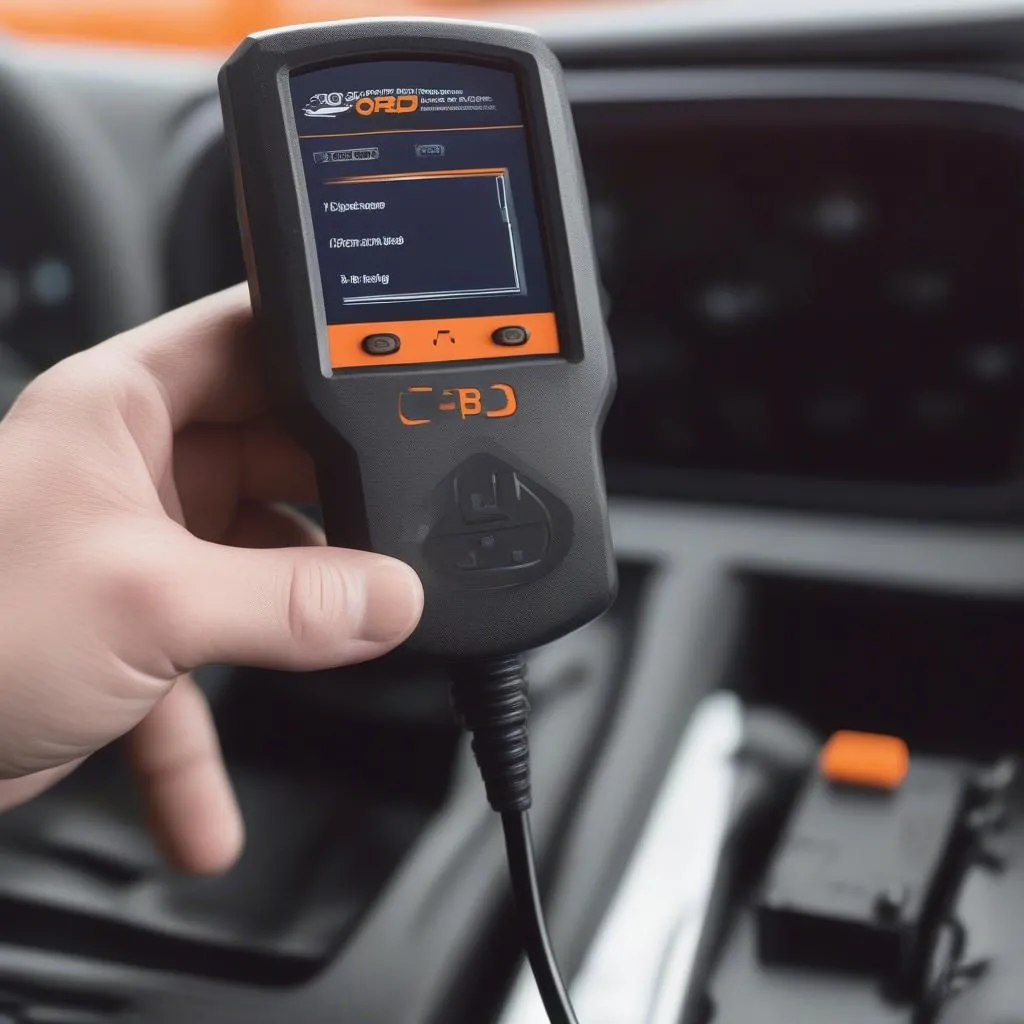A glowing brake warning light on your dashboard can be unnerving, especially when you’re behind the wheel. It’s a clear signal from your smart car that something needs attention within your braking system. While it can point to a simple issue like low brake fluid, it could also indicate a more serious problem requiring immediate attention. This comprehensive guide delves into the common causes of a smart car brake warning light and provides you with the necessary steps to take for a safe resolution.
Understanding Your Smart Car’s Brake Warning Light System
Modern smart cars are equipped with sophisticated sensor systems that constantly monitor various components, including the braking system. The brake warning light is a crucial part of this system, designed to alert you to potential issues that need addressing.
Here’s what your smart car’s brake warning light is designed to detect:
- Low Brake Fluid: One of the most common triggers for the brake warning light is a drop in brake fluid levels. This could indicate a leak in the system, which requires prompt attention.
- Engaged Parking Brake: If you forget to disengage your parking brake, even slightly, the brake warning light will illuminate as a reminder.
- ABS Malfunction: Your Anti-lock Braking System (ABS) is vital for safe braking, especially in slippery conditions. If the ABS sensors detect an issue, the warning light will activate.
- Brake Pad Wear: Most smart cars have sensors that monitor brake pad wear. When the pads thin down to a certain level, the brake warning light will come on, signaling the need for replacement.
- Other Brake System Issues: While the above are the most common reasons, the brake warning light can also indicate other problems within the braking system, such as faulty calipers, brake lines, or issues with the master cylinder.
What to Do When Your Smart Car Brake Warning Light Turns On
1. Assess the Situation:
- Is the parking brake engaged? Start by making sure your parking brake is fully released.
- How does the brake pedal feel? Does it feel spongy, go all the way to the floor, or require more pressure than usual?
2. Check Your Brake Fluid:
If it’s safe to do so, carefully check your brake fluid level. Refer to your owner’s manual for the location of the brake fluid reservoir and the recommended fluid type. Never open the reservoir while the engine is hot.
3. Proceed with Caution:
If your brake fluid level is extremely low, the brake pedal feels unusual, or you suspect a serious issue, do not drive the car. Call for roadside assistance or have your car towed to a trusted mechanic or dealership.
4. Schedule an Inspection:
Even if the issue seems minor, like a slightly engaged parking brake or you’ve recently topped off your brake fluid, it’s crucial to schedule an inspection with a qualified mechanic. Ignoring the brake warning light can lead to more serious and costly problems down the line.
Remote Diagnostics and Software Solutions: The Future of Smart Car Brake Repair
The automotive industry is rapidly evolving, with technology playing an increasingly vital role in diagnostics and repair. Remote diagnostics, where data from your smart car is transmitted to technicians wirelessly, can often pinpoint the cause of a brake warning light quickly and efficiently.
 Technician Performing Remote Diagnostics
Technician Performing Remote Diagnostics
In some cases, software updates or recalibrations can address certain brake system issues. This is where having access to specialized software and expertise becomes crucial.
Why Choosing the Right Experts Matters
When it comes to your smart car’s braking system, cutting corners is never an option. Seeking assistance from experienced professionals who specialize in smart car diagnostics, programming, and software-based solutions is essential. They have the in-depth knowledge and tools to:
- Accurately diagnose complex brake system problems.
- Perform software updates and calibrations specific to your smart car model.
- Utilize advanced remote diagnostics to identify issues efficiently.
- Recommend and carry out the correct repairs using high-quality parts.
By choosing specialists in smart car brake systems, you’re ensuring the safety and longevity of your vehicle.
FAQs About Smart Car Brake Warning Lights
1. Can I drive my smart car with the brake warning light on?
It’s not advisable to drive with the brake warning light illuminated. Doing so could worsen the underlying issue and potentially lead to brake failure.
2. How often should I check my brake fluid?
It’s good practice to check your brake fluid level at least once a month and top it off if necessary.
3. How long do brake pads typically last?
Brake pad lifespan varies depending on driving habits and conditions. However, they generally need replacement between 30,000 to 70,000 miles.
4. Can a software update fix my brake warning light issue?
In some cases, a software update might resolve certain brake warning light issues, especially those related to the ABS or other electronic components.
5. What is the difference between the brake warning light and the ABS light?
The brake warning light indicates a general issue within the braking system, while the ABS light specifically points to a problem with the Anti-lock Braking System.
6. Why is it important to use the correct brake fluid for my smart car?
Using the incorrect brake fluid can damage your braking system’s components and lead to costly repairs. Always refer to your owner’s manual for the recommended brake fluid type.
7. How can I find a reliable mechanic specializing in smart car brake repair?
Ask for recommendations from friends, family, or online forums dedicated to your specific smart car model. Look for mechanics with certifications and experience in smart car diagnostics and repair.
Conclusion
The brake warning light in your smart car should never be ignored. While it may signal a minor issue, it could also indicate a serious problem requiring immediate attention. By understanding the common causes, taking appropriate precautions, and seeking expert assistance, you can ensure the safety and reliability of your smart car’s braking system. Remember, regular maintenance and timely repairs are essential investments in your safety and the longevity of your vehicle.

